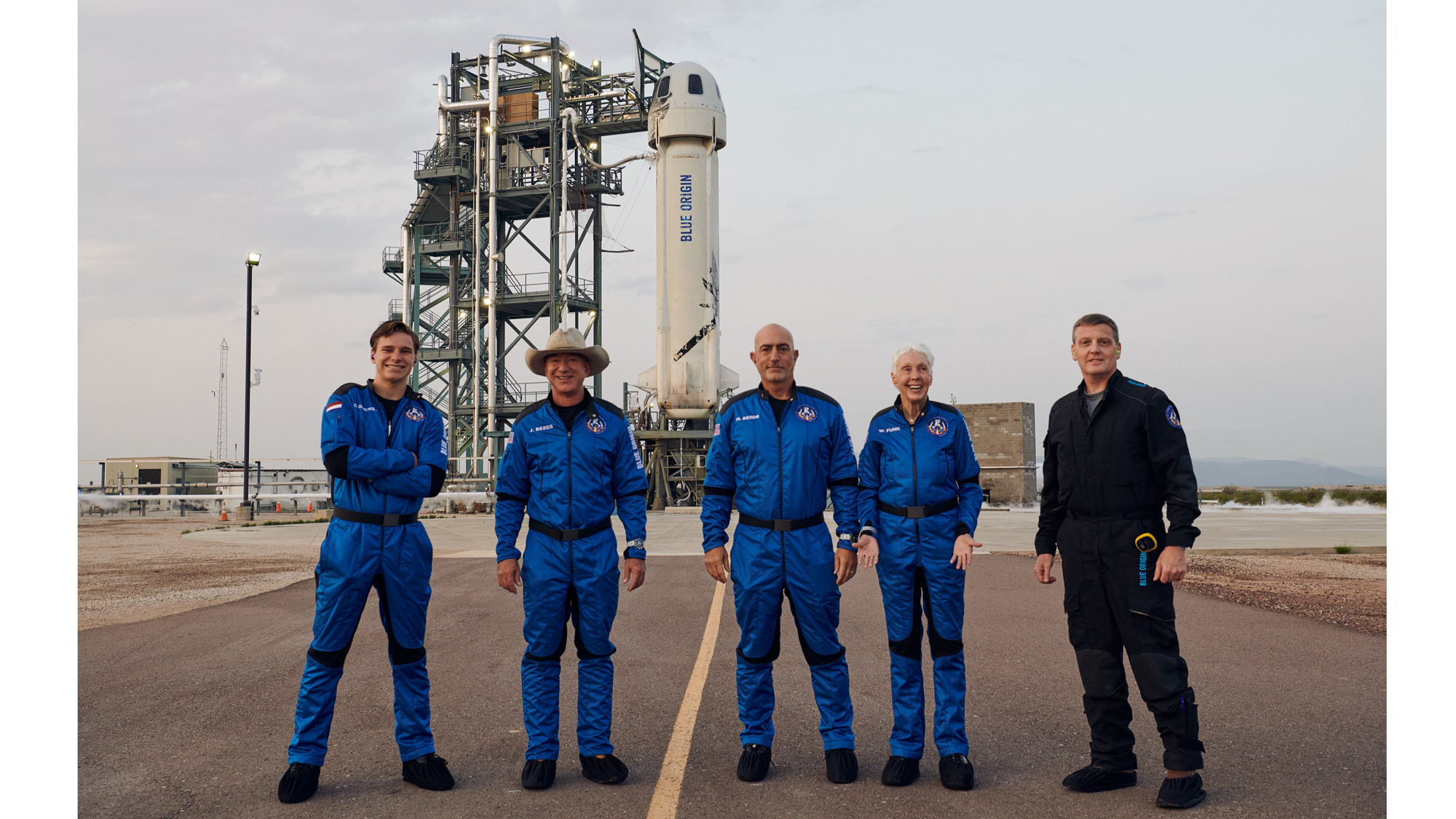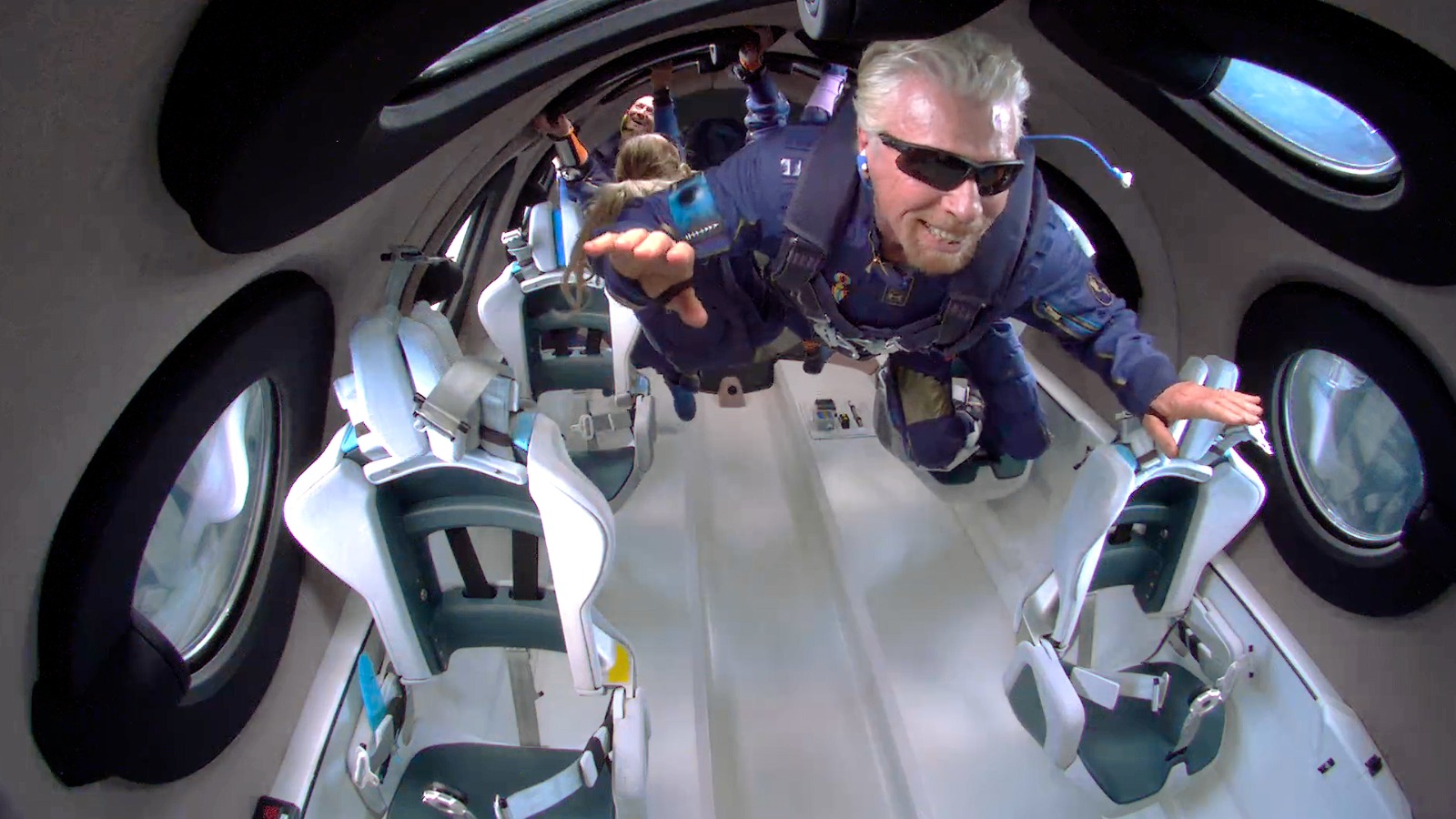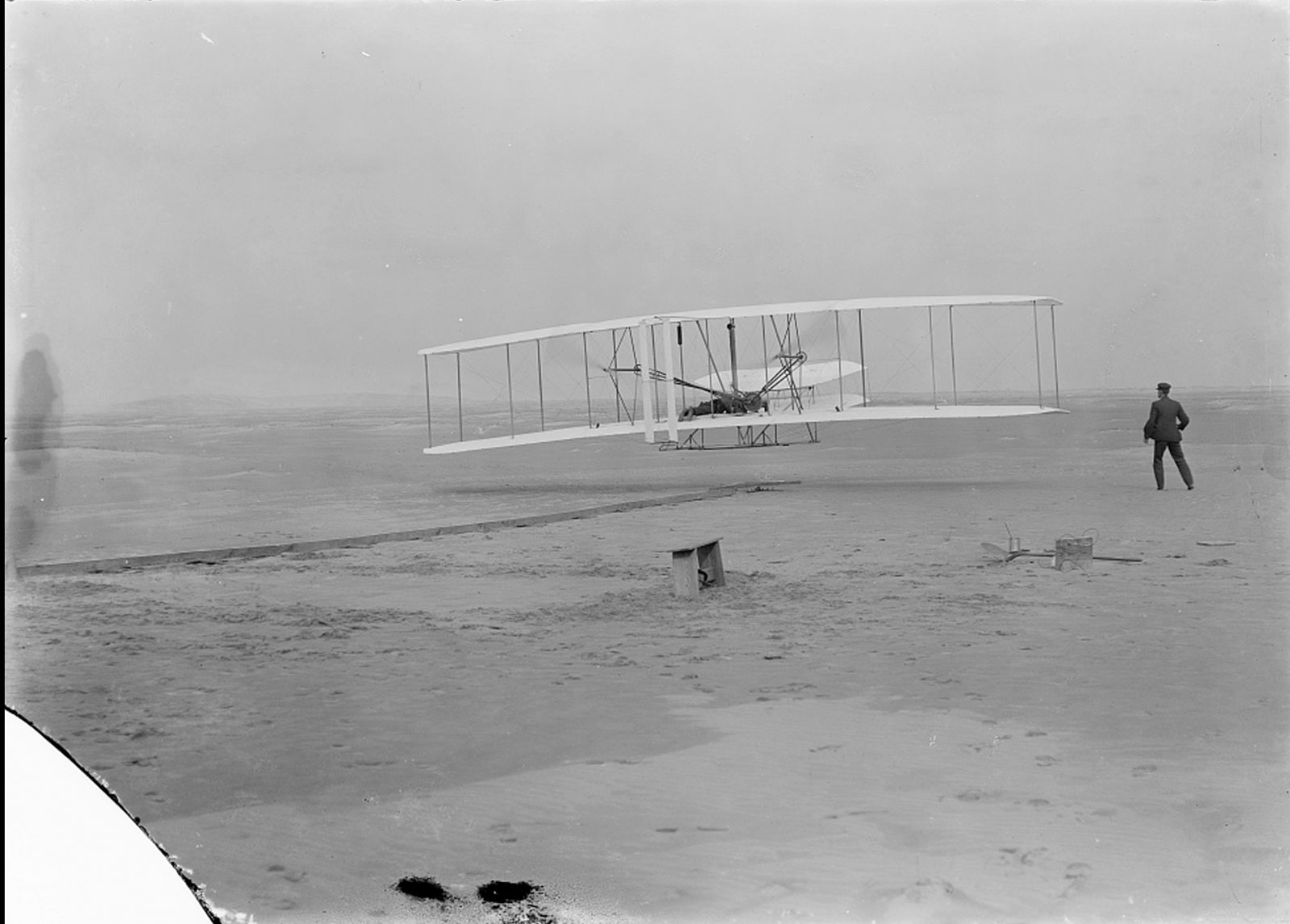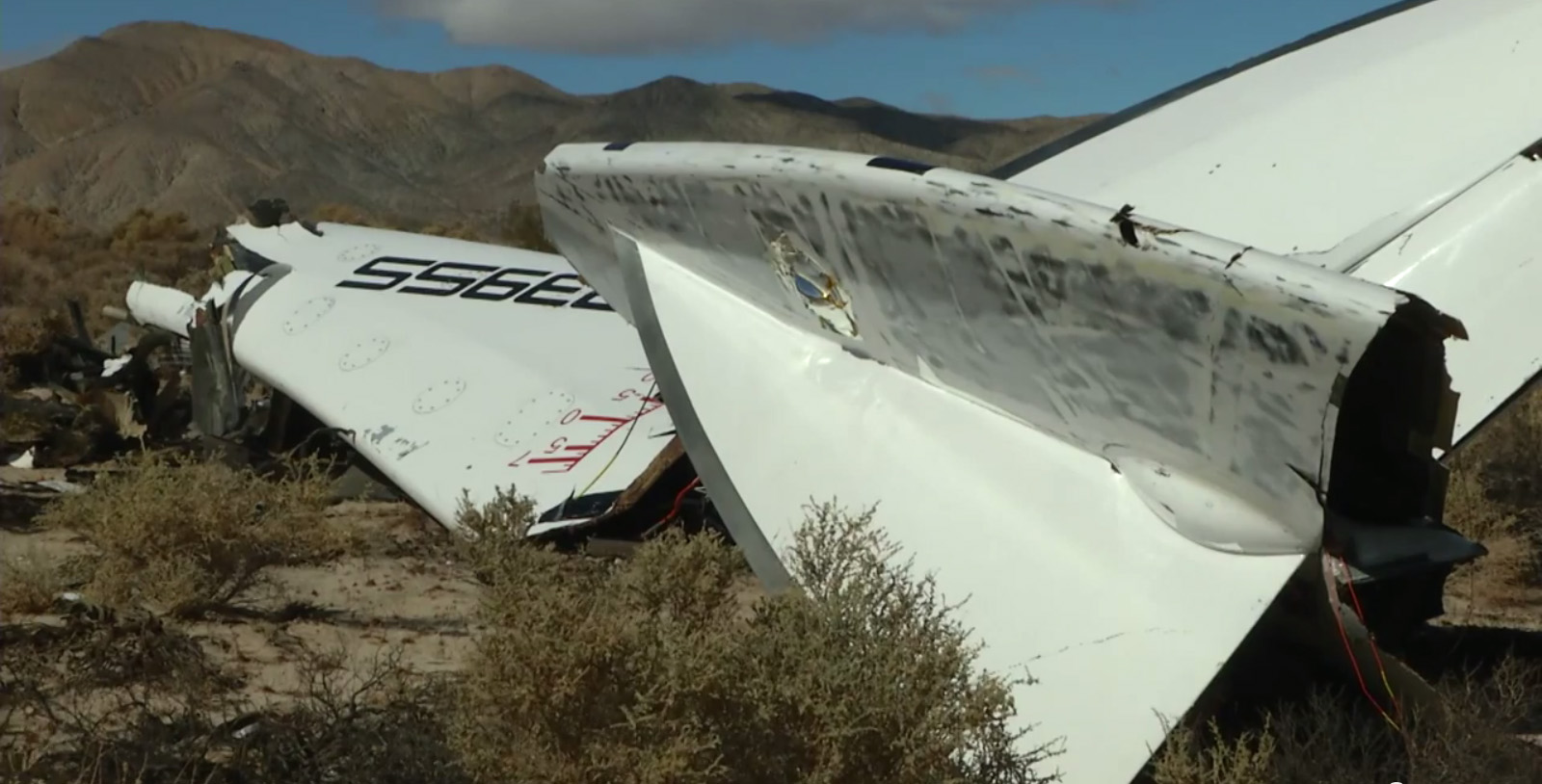Do space tourists really understand the risk they're taking?
Who makes sure space tourists get back safe? Space tourism industry representatives argue that stringent safety oversight would hamper the companies' ability to innovate.

Space tourism vehicles just might be the only transportation technology out there with the potential to kill humans that doesn't need to undergo independent safety certification. For now, aspiring space travelers seem okay with that, but is the fledgling industry playing a dangerous game?
The four private astronauts of SpaceX's Inspiration4 mission — the first-ever all-civilian flight to orbit — seemed relaxed a day before their Sept. 15 launch as they pondered the prospect of blasting off into nothingness sealed inside a space capsule, atop a rocket filled with explosive fuel.
Jared Isaacman, the tech entrepreneur who funded the mission and also served as its commander, claimed the crew was probably at a higher risk of an accident during the fighter jet flights they had taken during their training.
"Over the past couple of days, we've been tearing up the sky in fighter jets, which I put at a relatively higher risk than this mission," Isaacman said. "So we are nice and comfortable as we get strapped into [the Dragon Crew capsule]."
Related: Humanity needs a space-rescue capability, report stresses
How dangerous are rocket flights?
But how high exactly is the risk of dying during a space mission? Phil McAlister, director of commercial spaceflight for NASA, told the NBC's Today show on Sept. 15 that a ride on SpaceX's Crew Dragon capsule is about three times safer than a ride on NASA's space shuttle was in the final years of its operation, a time when shuttle flights were at their safest due to increases in inspections and awareness.
"We were able to incorporate some additional technologies. The Dragon system has an abort capability that we didn't have," McAlister told the Today show. "That has all increased the likelihood that you will have a successful mission."
Get the Space.com Newsletter
Breaking space news, the latest updates on rocket launches, skywatching events and more!
But what exactly does that mean? Teri Hamlin, the technical lead of space shuttle probabilistic risk assessment at NASA's Johnson Space Center in Houston, told National Public Radio in 2011 that, in the early days, the risk of a space shuttle flight ending in a disaster was a scary 1-in-9 flights.
By the time the shuttle retired in 2011, the fleet having lost two of its vehicles in catastrophic accidents, the risk had dropped tenfold, to about 1in 90. If that number and McAlister's extrapolation are correct, the probability of a catastrophic failure on Inspiration4 were about 1-in-300. (In practice, NASA suffered two fatal accidents in 135 shuttle flights, with the 1986 Challenger accident and 2003 Columbia tragedy killing seven astronauts each.)
Compare that with the 1-in-205,552 lifetime risk of an average American dying in an aircraft accident, according to data from the National Safety Council. On the other hand, the lifetime risk of dying in a car accident in the U.S. is 1 in 107, according to the same source.
Yet many experts warn that something unprecedented is going on in the space tourism industry that might increase the odds of aspiring space tourists dying in a crash.

Accountable to no one
"The problem is that the current space tourism industry neither has government [safety] regulation nor their own regulation," Tommaso Sgobba, executive director at the International Association for the Advancement of Space Safety (IAASS) and former head of flight safety at the European Space Agency (ESA), told Space.com. "Neither do they have any historical record to prove that their technology is safe."
No modern appliance or device — from hair dryers and microwaves to cars, aircraft and rollercoasters — can enter the market without first receiving a certification from an independent body that its design meets independently set safety standards. These certifications are there to ensure that effort has been made to minimize the risk that these technologies will injure their users and that someone independent from the company thinks they are safe.
But a U.S. Congress moratorium on safety regulations established in 2004 means that space tourism companies are less accountable than you might think.
"The moratorium was put in place to let the industry learn and progress following some very successful lobbying from the industry," Josef Koller, systems director at the center for space policy and strategy at The Aerospace Corporation, told Space.com. "The law specifies that emphasis should be placed on developing best practices and voluntary standards that could eventually lead to the implementation of regulation. But so far there is not much to go around really."
Currently, the Federal Aviation Administration (FAA) requires commercial space companies to demonstrate that their operations present no risk to the public on the ground (or in the air space). The agency, however, has no oversight over the safety of the flight participants, nor does it certify the launch and entry vehicles as safe for humans, an FAA spokesperson told Space.com in an email.
"Under federal law, the FAA’s commercial space transportation oversight responsibilities are designed to protect the safety of the public on the ground and other members of the public using the national airspace system — not the individuals in the space vehicle," Steve Kulm, FAA public affairs specialist, said in the email. "In fact, Congress has prohibited the FAA from regulating the safety of the crew or spaceflight participants. Further, Congress has not authorized the FAA to certify the launch or reentry vehicle as safe for carrying humans."
Companies, however, have to prove that their technology worked safely during a test flight to gain FAA license approval to carry humans, Kulm added.

Stifling innovation
Karina Drees, the president of the Commercial Spaceflight Federation, which represents space tourism companies, told Space.com that early regulation could stifle innovation in the fledgling sector and prevent the best technologies from being developed.
"That's the concern I think a lot of folks have," she said. "If we see regulation a little too soon, then there's a real potential for the best technologies to not come forward. The vehicles that have been designed today are quite different from each other. And so if regulation had been written on any one style, then that would have really prevented some of these designs from coming to the market."
Today's space tourists therefore sign informed consent in which they accept whatever might happen during the mission.
"That's one of the things that makes this country [the U.S.] great: the ability to make your own choices," Drees said. "Americans can choose whether to go scuba diving, which isn't heavily regulated, they can choose to go skydiving, they can choose to have elective surgeries. All of these things are under the same type of informed-consent requirements."

Early aviation's 'tombstone technology'
Danielle Bernstein, principal director for federal programs at The Aerospace Corporation, told Space.com that the situation in the commercial human spaceflight sector is similar to that of the early decades of aviation.
"When the Wright brothers finally figured out flying and into the 1910s and 1920s, we didn't have much commercial flight," Bernstein said. "It was more military and exploratory. But then you move later into the century and there was more of it. But still, there wasn't a lot of regulations. And so there were accidents."
The approach taken by the early aviation pioneers is sometimes described as fly-fix-fly or, as Sgobba says, "tombstone technology."
"They would build the machine, fly it, wait for an accident to happen, investigate it, and if they found a problem with the technology, they would learn from it and fix it," said Sgobba.
He added that, unlike the early aviators, space tourism companies are not building a technology from scratch. Government-funded agencies such as NASA or Russia's space agency Roscosmos have accumulated decades of experience managing the risk associated with flying things (and people) to space.

The questions
"The approach that has been in place in the space industry for the last maybe 40 years is focused on performance requirements and fault tolerance," Sgobba said. "For example, your design should never allow a single human error to cause a disaster. But if you look at the 2014 Virgin Galactic crash, that's exactly what happened."
On Oct. 31, 2014, a Virgin Galactic test flight operated by the company's contractor Scaled Composites, suffered a fatal crash when its SpaceShipTwo vehicle, called Enterprise, broke apart during a rocket-powered phase of the flight. One pilot was killed and another seriously injured.
In a subsequent investigation, the U.S. National Transportation Safety Board found that the Virgin Galactic crash was caused by the early release of SpaceShipTwo's feathering tail, which is designed to slow down and stabilize the craft during its descent through Earth's atmosphere.
During Virgin Galactic's triumphant first fully crewed spaceflight this past July, which carried billionaire owner Richard Branson on board, the company's VSS Unity space plane deviated from its approved trajectory into the surrounding air space, where it could potentially have jeopardized civilians flying on commercial aircraft.
The incident led the FAA to essentially ground Virgin Galactic until an investigation is completed. The company therefore had to suspend its planned second fully crewed flight, which was supposed to take place in late September or early October. The company is now selling tickets for its flights to suborbital space for $450,000 per seat.
Sgobba questions whether the excitement of a space trip would be enough for enthusiasts (and a lot of bored rich people) if some of these "ordinary citizens" were to perish during their adventure.
"I think that once civilians start dying, the market for space tourism will evaporate," Sgobba said. "Just like it evaporated for Concorde. Concorde was a luxurious version for going from Paris to New York. But once it had an accident, people lost interest. The companies fixed the problem, but the interest was no longer there."
Independent reviews
Virgin Galactic's space plane is, according to Sgobba, inherently more dangerous than a capsule such as Blue Origin's New Shepard or SpaceX's Crew Dragon. The reliance on the human factor is higher, and it is impossible to perform tests without human pilots inside.
"Virgin Galactic is more problematic, because there is always a problem when there are safety-critical mechanisms in place," Sgobba said. "It could be a helicopter or another aircraft concept; there is always a higher risk when there are large moving parts that you rely on to accomplish your mission to be safe. That doesn't mean that you cannot operate something like the Virgin Galactic feathering tail safely, but there definitely needs to be extra effort to make this safe."
Blue Origin shares information about its approach to safety in a video on its website. The company stresses a multiply redundant approach that should ensure that no critical system can break down without a backup being available, Blue Origin representatives said.
SpaceX benefited during the development of its crewed system from cooperation with NASA. The company has a contract to fly NASA astronauts to and from the International Space Station, so it has to meet the space agency's rigorous safety standards.
Still, Sgobba questions some of SpaceX's practices.
"For the Inspiration4 mission, they replaced a docking port on the Dragon crew capsule with this beautiful cupola," Sgobba said. "But my question is, who, independent from the project, reviewed this change to make sure it's safe?"
Before NASA, ESA or the other space agencies launch anything into space, they conduct flight readiness reviews, Sgobba explained. The independence of the panel conducting the review is a key requirement to making its findings valid. During such a review, every part is scrutinized to minimize the chance that problems will occur.
"But who was in charge of reviewing the changes they made for the Inspiration4 mission?" said Sgobba. "Was it just Elon Musk giving his approval? That would be the first case in the history of technologically advanced industries when a single person, the owner, has the final word on an activity like this."
Again, in the current regulatory environment, there is no one to ask questions about such procedures.
What's next?
The 2004 U.S. Congress moratorium on the safety regulation of space tourism is set to expire in 2023. But what exactly will happen next is still unclear.
The Commercial Spaceflight Federation has been cooperating with standards organization ASTM International on guidelines and has already published recommendations on fault tolerance, data exchange to support the integration of space operations into air traffic management and classification of safety events, said Drees.
When asked whether the industry would be ready for more stringent regulations after 2023, she said she doesn't think so. It's still the early days, and regulation would impede innovation, she said.
For the foreseeable future, aspiring space tourists, or spaceflight participants, will have to trust the companies that they want to fly with. To help the customers make the decision whether to sign the informed consent waiver, the companies are obliged to disclose their safety record, and Drees believes everybody is ready to do so.
"It's really in the company's best interest to make sure they're disclosing in pretty clear terms the track record of the vehicle, because they want their companies to be ongoing for years to come," Drees said. "There's really no incentive for the companies to not disclose any of that information. And there's no incentive for the companies to take shortcuts to not practice safely."
Some might question how justified such trust in those companies really is. Bank of America, which covers Virgin Galactic's publicly traded stock, last week criticized the company's failure to disclose that VSS Unity veered off course during the July flight, the incident that led to the grounding by the FAA.
Sgobba, in the meantime, calls for a more "mature" approach and, together with other industry veterans like Koller and Bernstein, proposes the creation of a new independent body for the safety of commercial spaceflight operations, the Space Safety Institute.
"The Space Safety Institute would serve as an independent reviewer," Sgobba said. "It would also focus on education and research in critical areas of space systems' safety."
Koller added: "The Space Safety Institute would provide a platform where people and entities could come together and discuss ways of accomplishing their goals. If a company has a new idea, it's important to provide support and technical analysis on whether the system can actually achieve that goal and be safe."
Drees said the commercial spaceflight industry might be supportive of such an idea, as long as it doesn't inhibit its ability to innovate.
"That's going to be really critical to the future of the industry— that we don't write standards and regulations before we have that opportunity to innovate and design new vehicles," she said. "So, as long as we still have that opportunity to design and build and fly the vehicles without being subject to stringent regulations right from the start, then I think industry is generally supportive of that idea."
This article was updated on Sept. 30, 2021, to reflect that the Virgin Galactic test flight was not operated by the company itself but by its contractor Scaled Composites.
Follow Tereza Pultarova on Twitter @TerezaPultarova. Follow us on Twitter @Spacedotcom and on Facebook.
Join our Space Forums to keep talking space on the latest missions, night sky and more! And if you have a news tip, correction or comment, let us know at: community@space.com.

Tereza is a London-based science and technology journalist, aspiring fiction writer and amateur gymnast. Originally from Prague, the Czech Republic, she spent the first seven years of her career working as a reporter, script-writer and presenter for various TV programmes of the Czech Public Service Television. She later took a career break to pursue further education and added a Master's in Science from the International Space University, France, to her Bachelor's in Journalism and Master's in Cultural Anthropology from Prague's Charles University. She worked as a reporter at the Engineering and Technology magazine, freelanced for a range of publications including Live Science, Space.com, Professional Engineering, Via Satellite and Space News and served as a maternity cover science editor at the European Space Agency.









